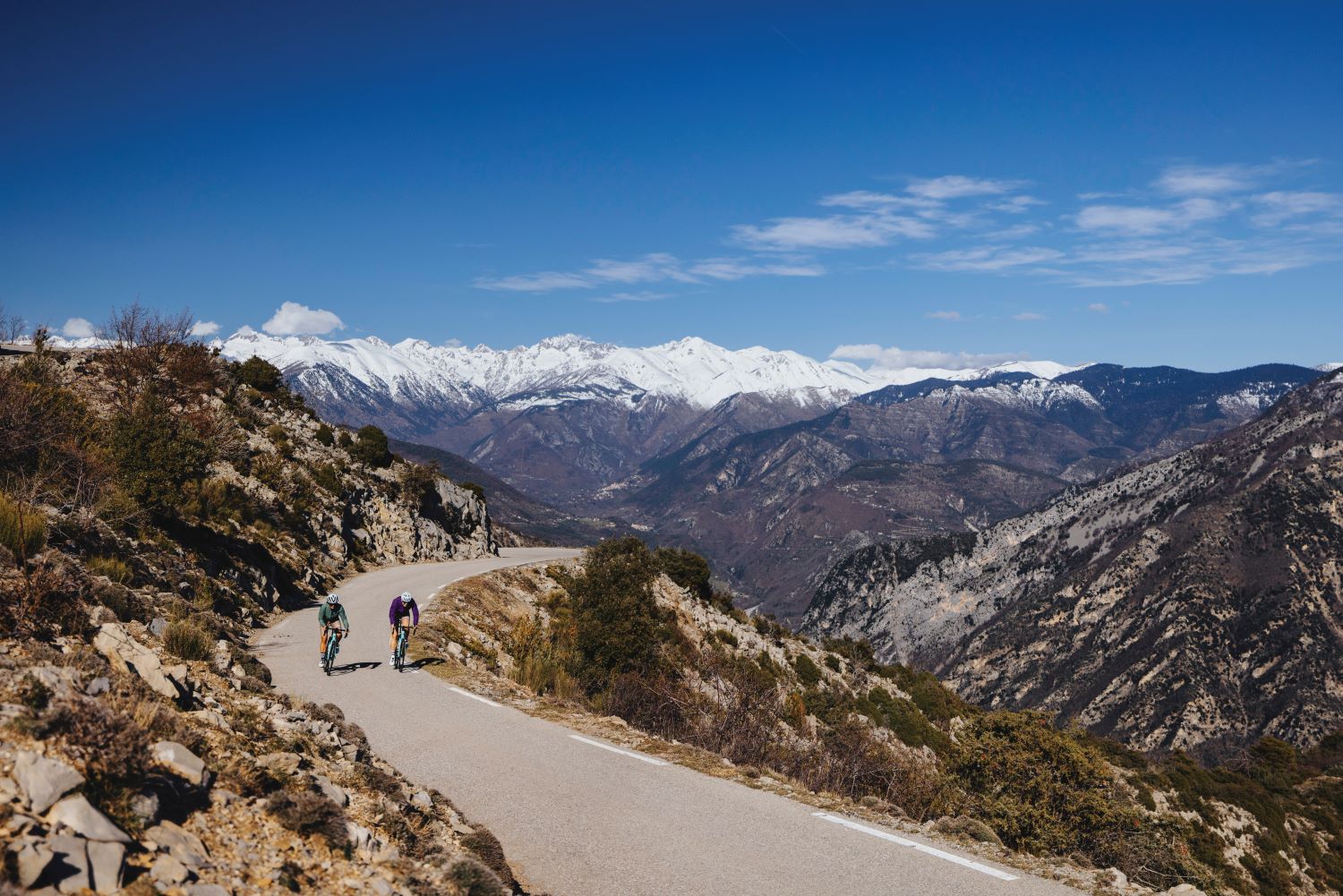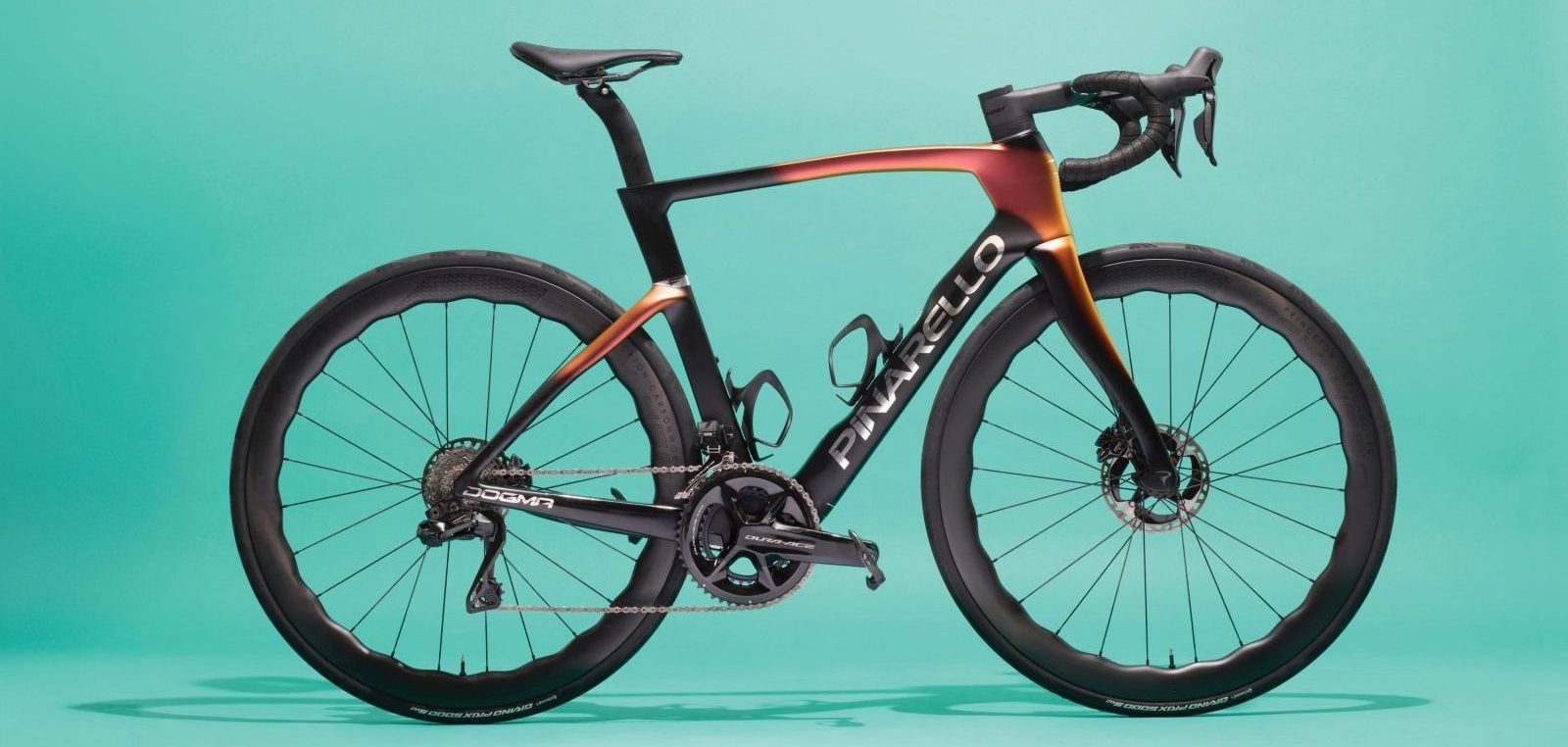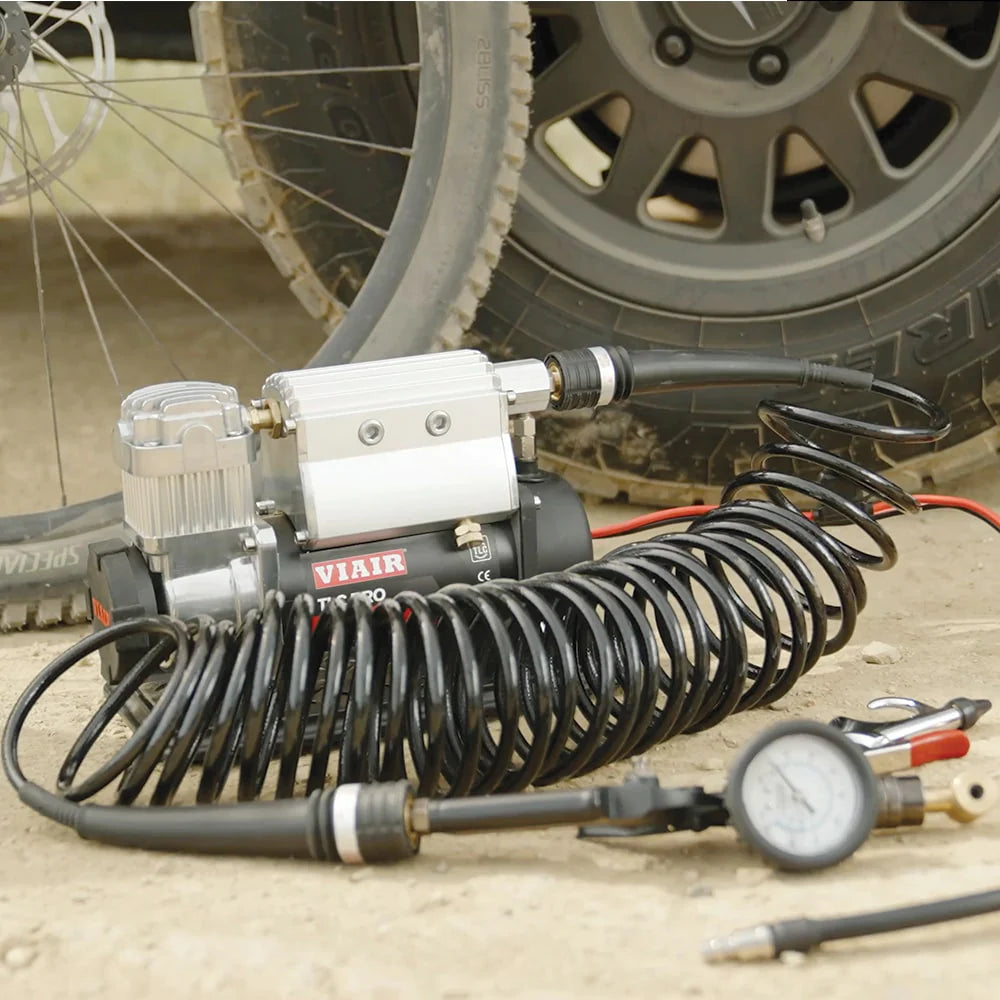There’s a reason Nice was chosen for the final day of this year’s Tour de France. It’s perfectly set up for road cyclists
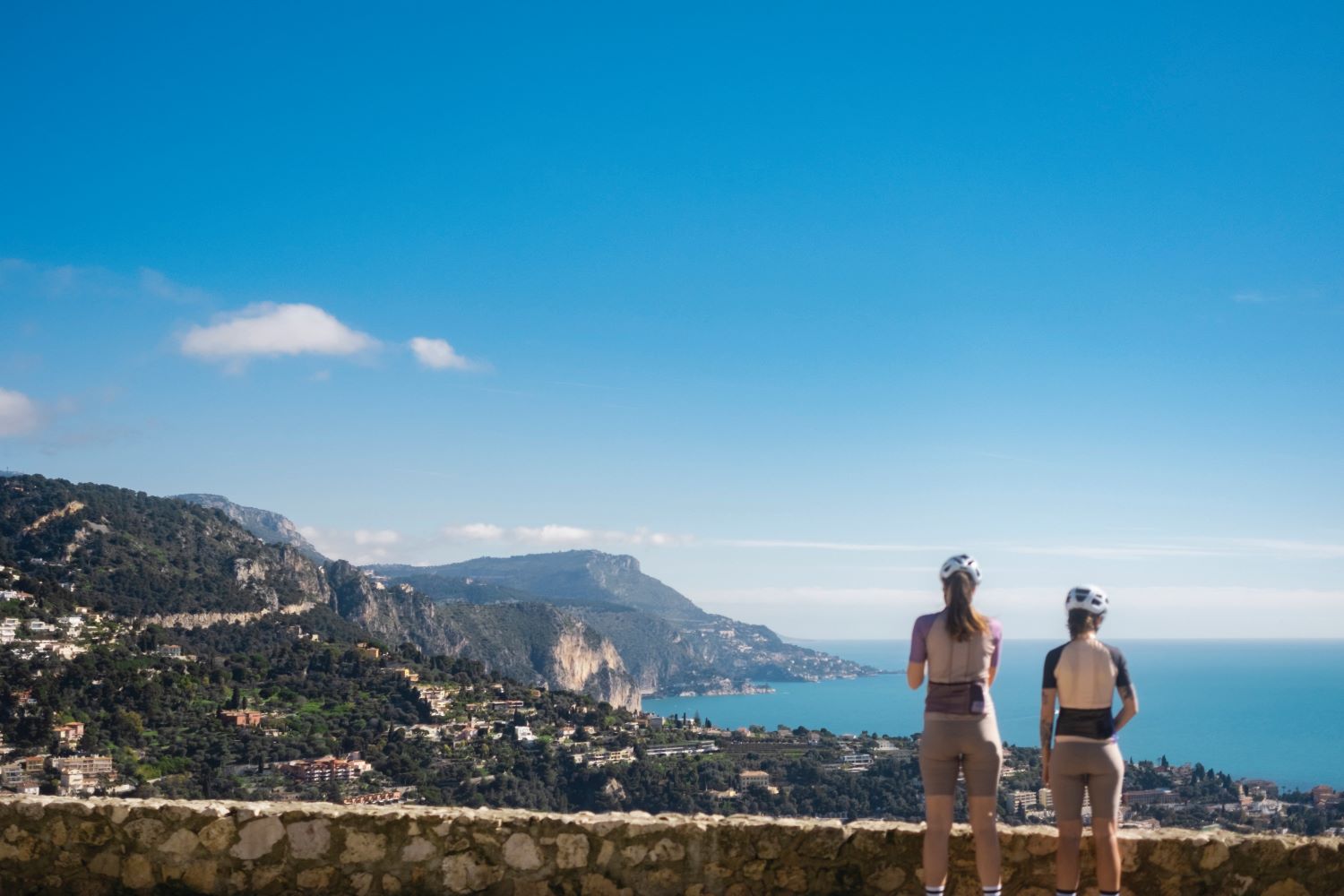
Words Emma Cole Photography Samantha Saskia Dugon
Nice is a cycling city.
Nestled on the southern coast of France, it has the pleasant climate and relaxed atmosphere of a Riviera beach resort, but turn away from the azure waters of the Mediterranean and your gaze is drawn upwards to the foothills of the French Alps.
Is it any wonder that so many pro cyclists decide to call Nice home, or that the city is such a magnet for riders looking to escape the winter cold? It’s mid-March when Cyclist visits.
The morning sun is warm, and the bike path on the Promenade des Anglais – the road along the seafront so named because it was paid for by English expats in the 1800s – is a constant flow of cyclists.
An unidentifiable rider in Team TotalEnergies pro kit flits past, followed shortly after by EF Education-EasyPost’s Neilson Powless.
Just in case anyone was still not convinced that this is a city dedicated to cycling, a large billboard has been erected that is counting down the days until the Tour de France arrives.
In 2024, for the first time ever, the Tour won’t finish in Paris.
Instead – so as not to clash with the Olympics – the Grande Boucle’s final day has had to find a new home, and the place the organisers have chosen is Nice.
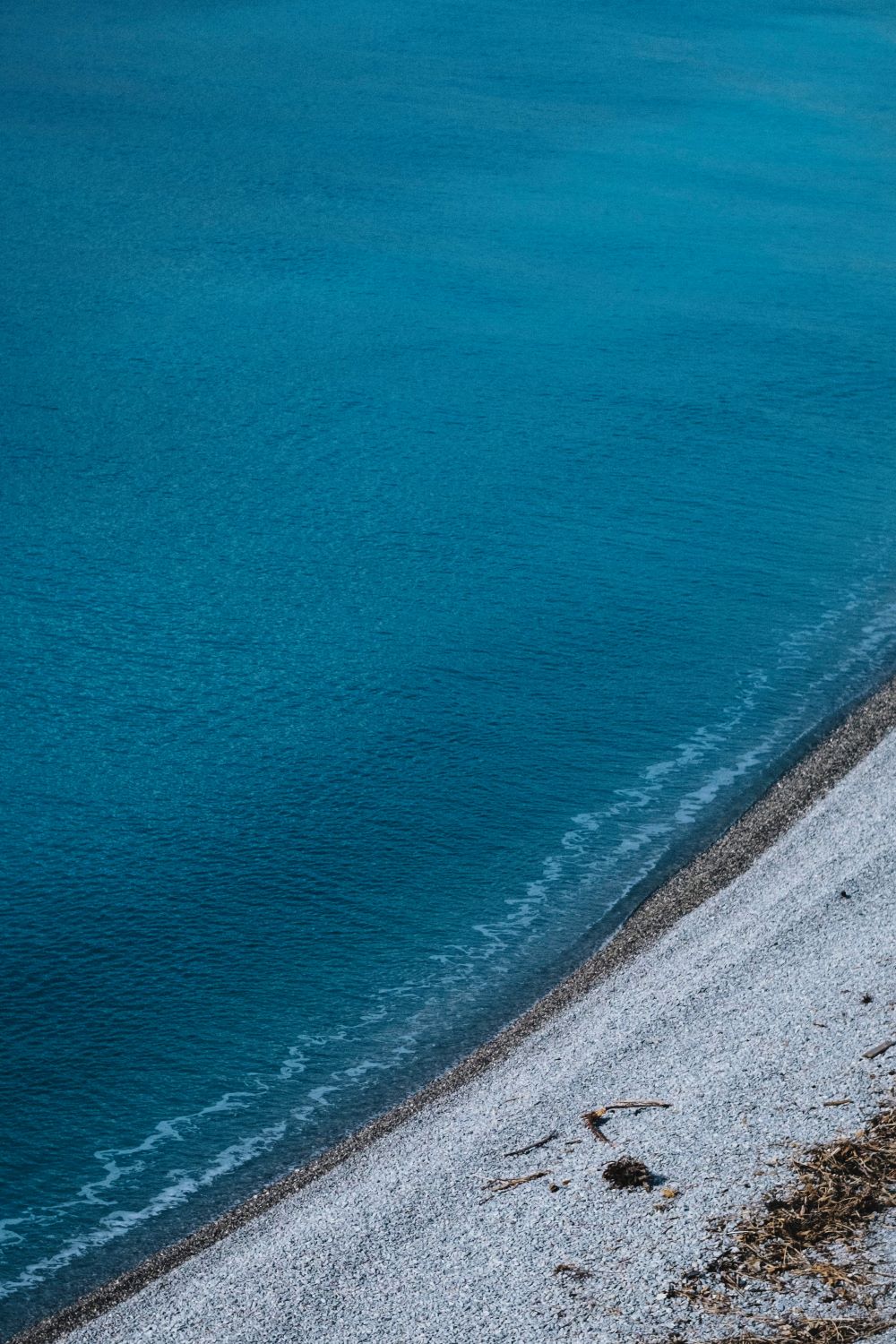
Cafe culture
Our ride today starts from Café du Cycliste, located by the harbour in Nice.
While best known now for its line of cycling apparel, the brand began life as a cafe in Nice and is still based here.
More importantly, it’s still a cafe, so we can sip a coffee before picking up our rental bikes (also available at Café du Cycliste) and heading out into the sunshine.
My guide is Lucie Denis, who knows the roads around Nice intimately and tells me she does hundreds of kilometres here on her fixie.
I suspect I’m going to have my work cut out today.
We hug the coastline and start with a warm-up on Mont Boron, a small climb that runs through a peaceful park frequented by locals walking their dogs.
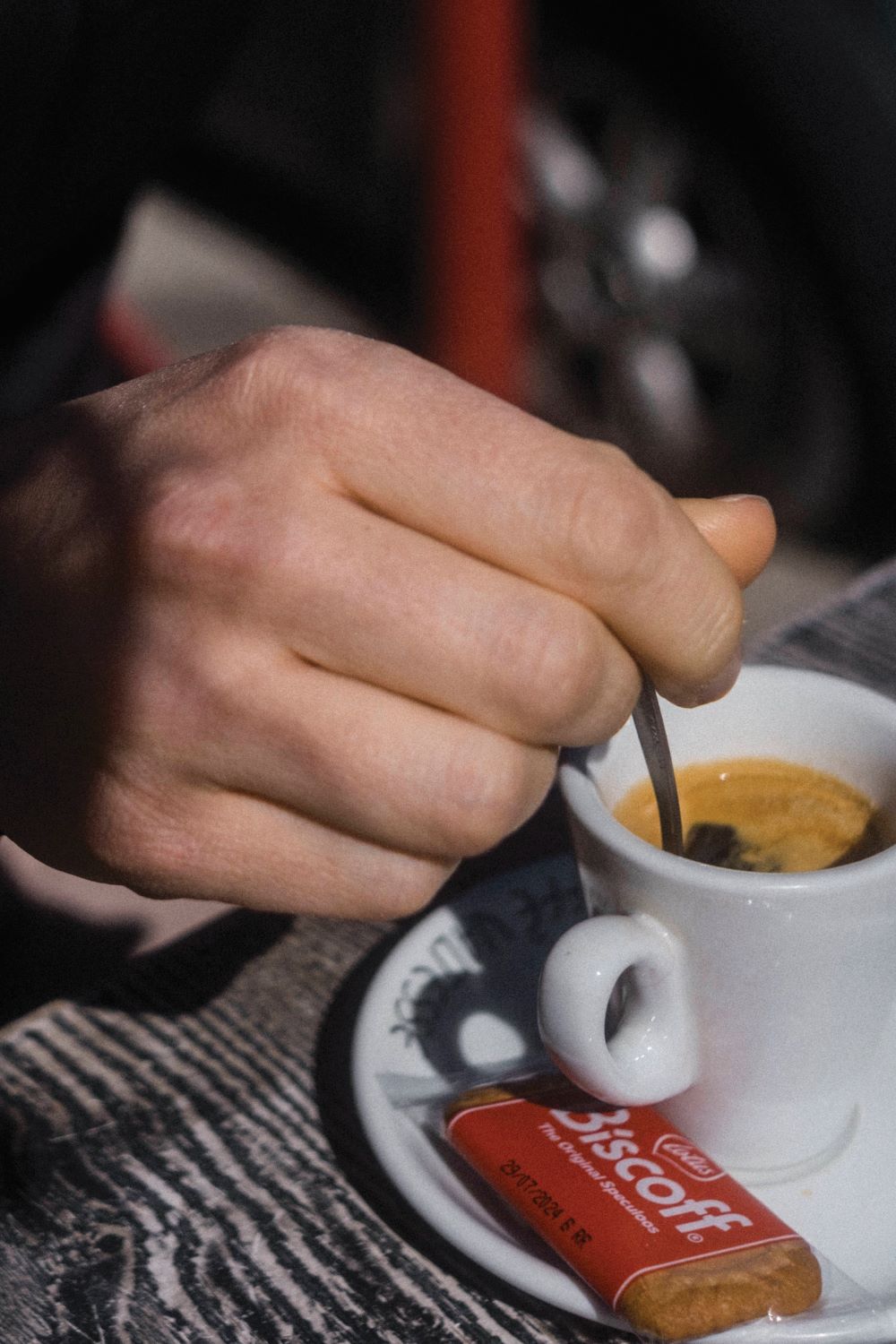
We’re barely a stone’s throw from the city centre and already it feels like we’re in the countryside.
The sun is warming us nicely, and I’m another step closer to understanding why Nice is so popular with ‘winterers’ throughout Europe.
In 2021 UNESCO granted World Heritage status to Nice, recognising it as the Winter Resort Town of the Riviera.
It’s only fitting, as in the 1800s the nobility would flock here to escape grim winter weather, and so Nice was a winter destination long before it became a summer hot spot.
We wiggle our way down through the trees and find a viewpoint at Fort du Mont Alban, a 16th century fortress.
From here we can look down onto Saint-Jean-Cap-Ferrat, a finger of land that juts out into the Mediterranean, also known as the second most expensive residential location in the world after Monaco.
I imagine what I would be doing if I had that kind of money, and conclude that I would still probably be riding my bike into the foothills of the Alps.
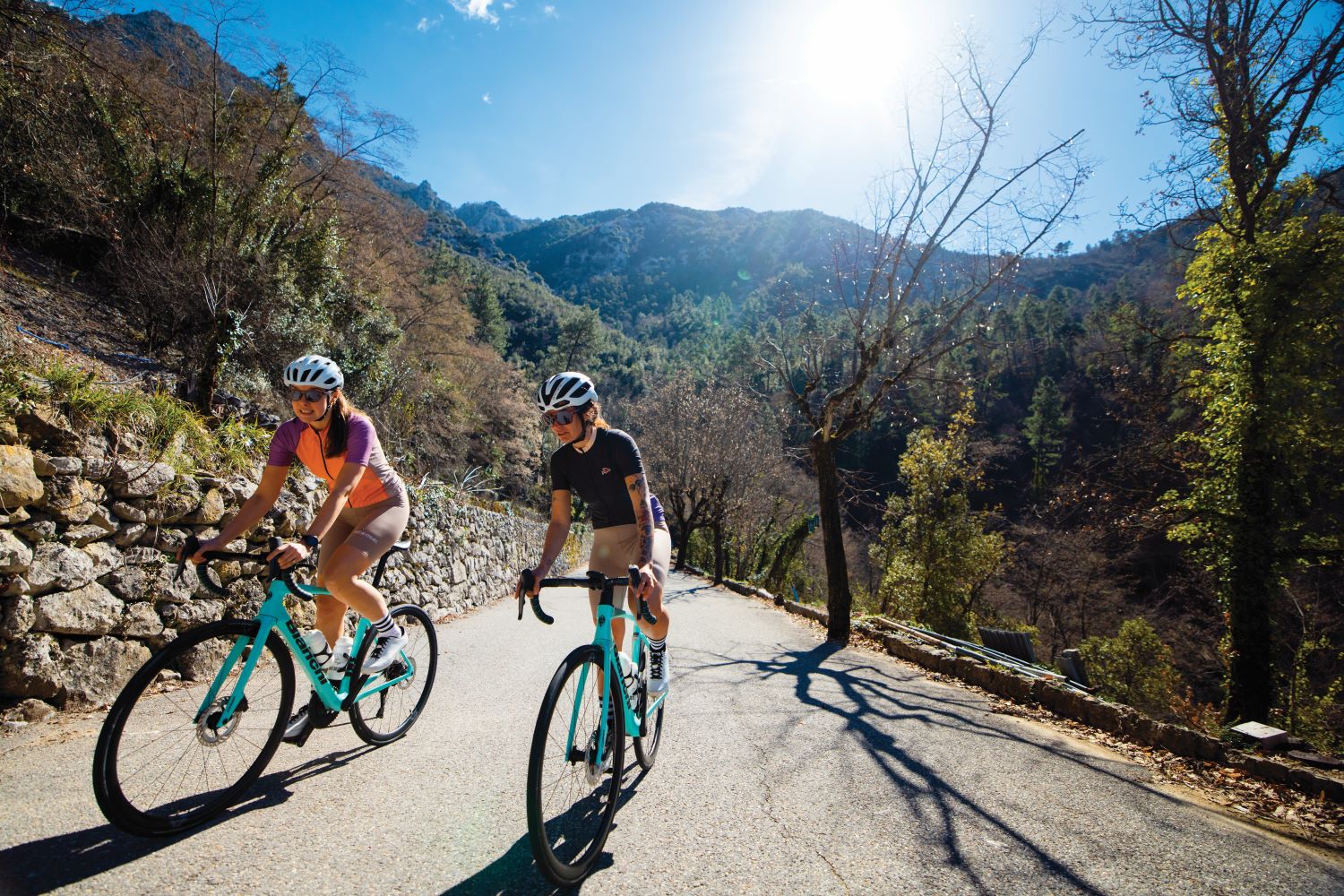
This thought makes me happy.
We join a main cycling path that ushers us northwards out of the city.
As we ride, the number of buildings diminishes while the number of olive trees increases, and after 25km we reach the small town of Levens where Lucie informs me there is a notable boulangerie.
Alas, it is closed (it’s a Wednesday – you have been warned) so we find the nearest tabac and glug down some grenadine.
In search of sanctuary
Once we’re beyond Levens the landscape changes.
Where before it was green and gently rolling, now it is rocky and dramatic as the road carves through ravines, clinging to the vertiginous walls of the Vésubie gorge.
The further we dive into the maze of cliffs, the narrower the road gets, to the point where I am fearful of what might happen should we meet a truck coming the other way round one of the many blind corners.
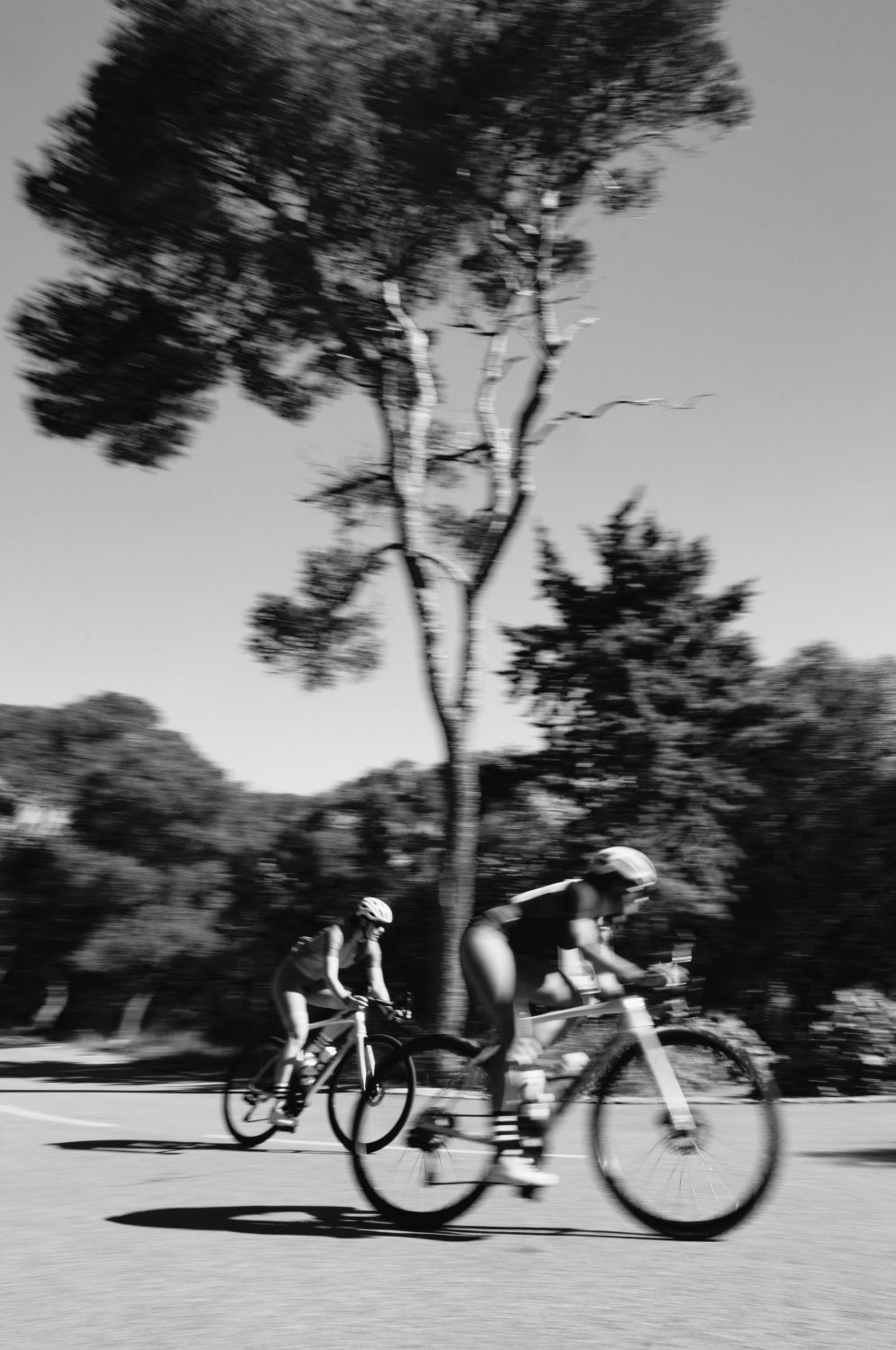
Thankfully traffic is minimal.
I squeeze as close to the rock face as I dare, worried that I might clip my handlebars if I let my concentration drift.
At least we’re not going the other way, where a misguided wobble at the edge of the road might risk tipping over the low wall and dropping into the ravine on the other side.
As if to emphasise the point, when we pass the town of Duranus we reach Le Saut des Français, which literally means ‘the jump of the French’.
Today it’s a panoramic viewpoint but back in the 1800s, Lucie explains, this is where militias called Barbets pushed their enemies 300m to their deaths.
I glance over the edge and take in the steep drop with the sound of water gurgling in the river far below.
It doesn’t take much to imagine the horrors.
Another 5km further on we arrive at Saint-Jean la Rivière, a pretty town surrounded by lush, forested hills, and where the ascent to the Madone d’Utelle begins.
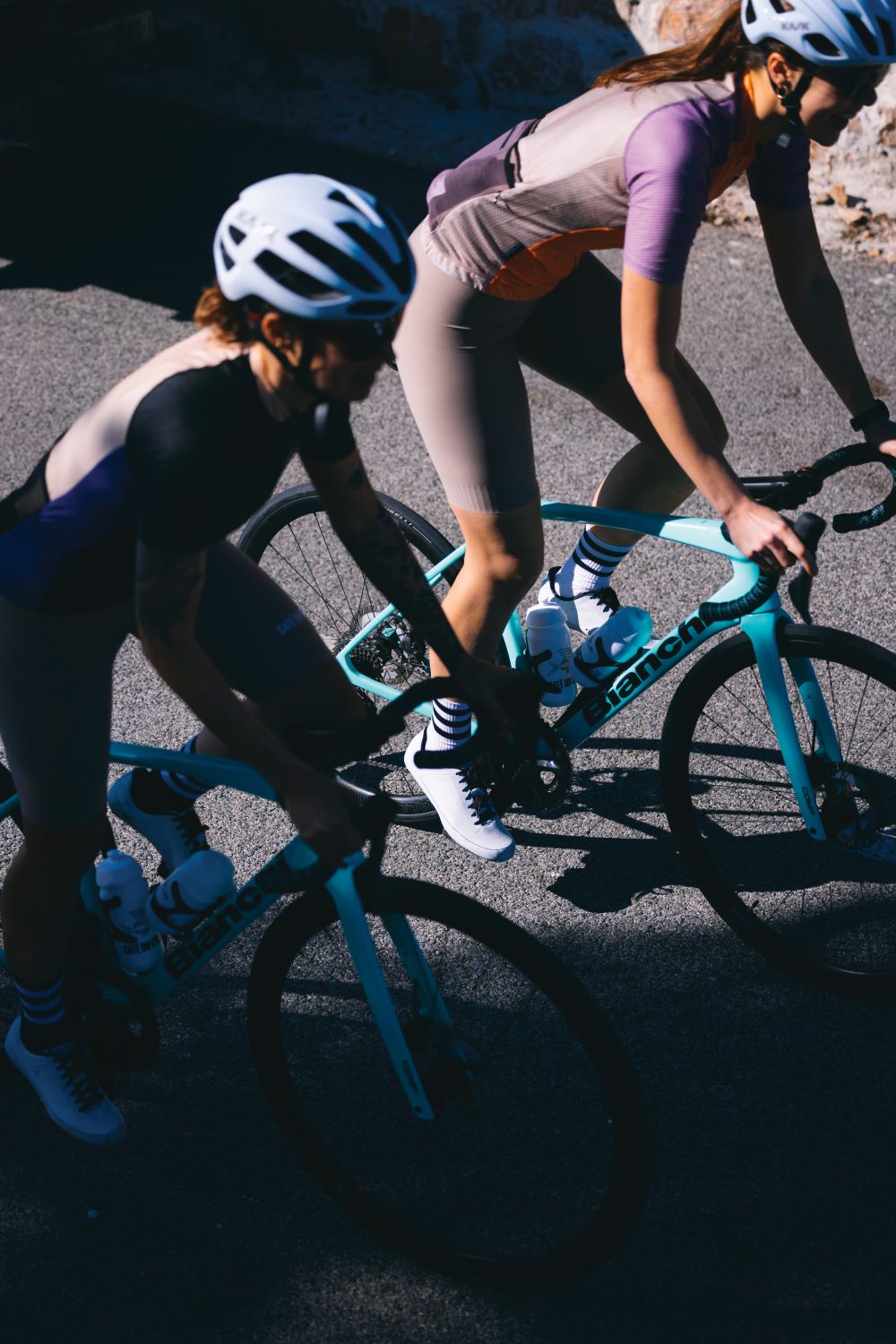
This is our main target for the day – a true Alpine climb, 15km in length with almost 900m of elevation, a 6% average gradient and switchbacks galore.
And all within easy reach of a major city.
The first part is on smooth tarmac and meanders upwards at a relatively benign 5-6%, passing olive groves and the occasional hotel perched on the hillside.
We tap out a regular rhythm until we reach Utelle, a tiny town where every home has a spectacular view and lines of parked cars mark the start point for hiking trails that head into the surrounding hills.
Just beyond the town, a left turn and a signpost indicates 6km to go to the summit.
At this point the road narrows and the quality of surface deteriorates.
Some recent landslides mean we must pick our line carefully in places and an impending series of hairpins tells us the gradient is about to ramp up.
There are no houses anymore, just woodland and endless views to the snow-dusted mountains of the Alps in the distance. It is completely quiet.

Eventually we arrive at the summit plateau at 1,174m, upon which sits the sanctuary of Madone d’Utelle.
Even better, there’s a cafe, but today it is without electricity owing to storm damage and so we have to make do with crisps.
Still, as we munch, we are treated to a 360° panorama of the Var and Tinée valleys.
A little further on from the sanctuary is a small monument, looking for all the world like a gazebo that has been removed from a park and plonked on the top of a French mountain.
It offers some of the finest views that anyone could hope for, and is guarded by four large Patou, or Pyrenean Mountain Dogs.
They are bred to protect sheep from predators, but for all their fabled ferociousness these ones are easily won over with a tickle beneath the chin.
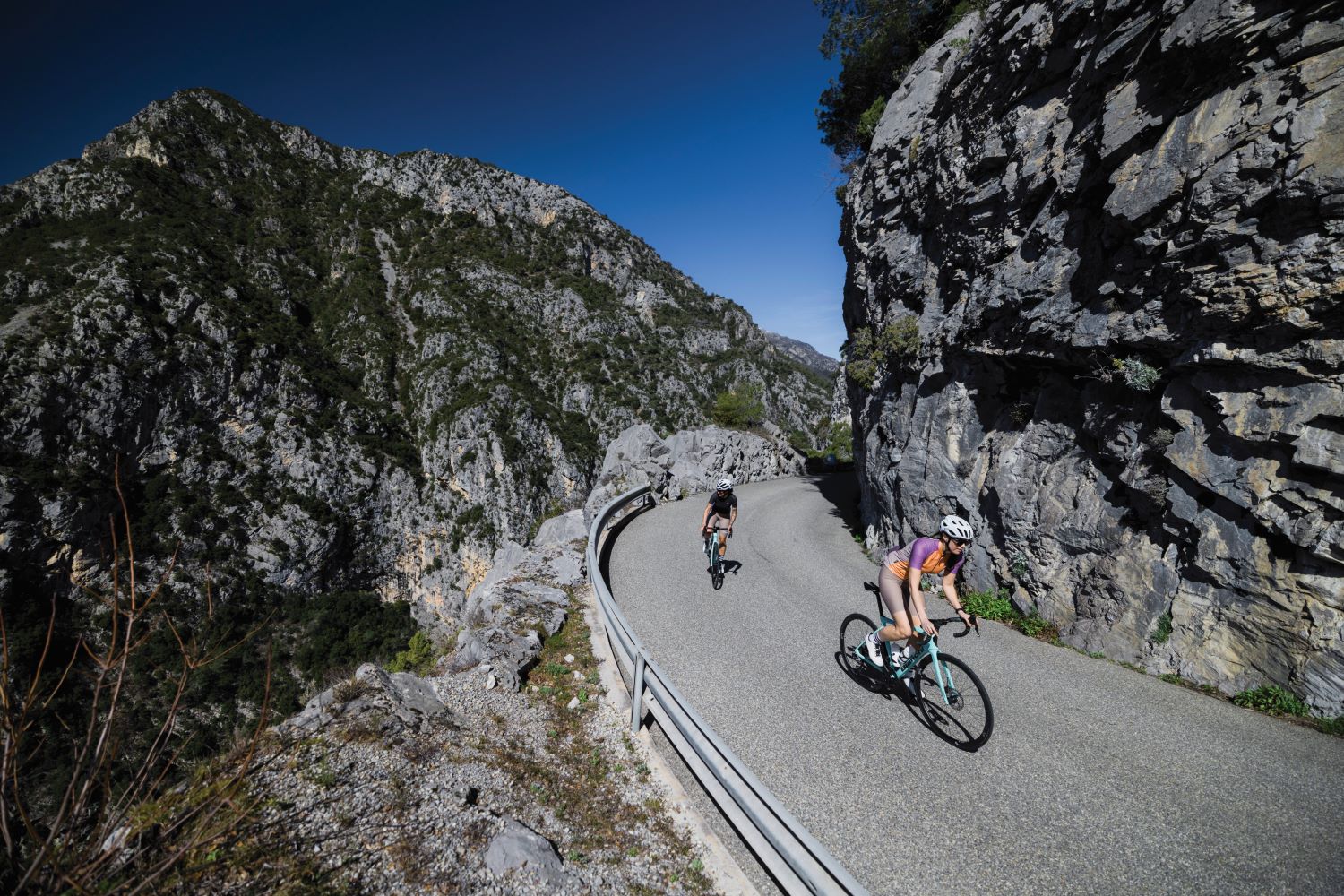
Climbs and vines
The descent back to Utelle is a fast-flowing joy, with nothing but blue sky and white-tipped mountains ahead of us.
We slip through Saint-Jean la Rivière and plunge back into the Vésubie gorge, only this time via a lower road that tracks alongside the river that winds through the base of the gorge.
Short tunnels drip with water that seeps through the stones above us and make us shiver when the drops find their way down the backs of our necks. The sun has dipped and it’s starting to get chilly.
I stay locked to Lucie’s back wheel as she pushes hard towards Nice – we still have 30km to go and one more climb.
After a long, fast descent on a fairly major road, we duck left onto Route de Colomars towards the village of Bellet, where sweeping views of the valley below do little to ease the spikes of up to 20% that are unforgiving on tired legs.
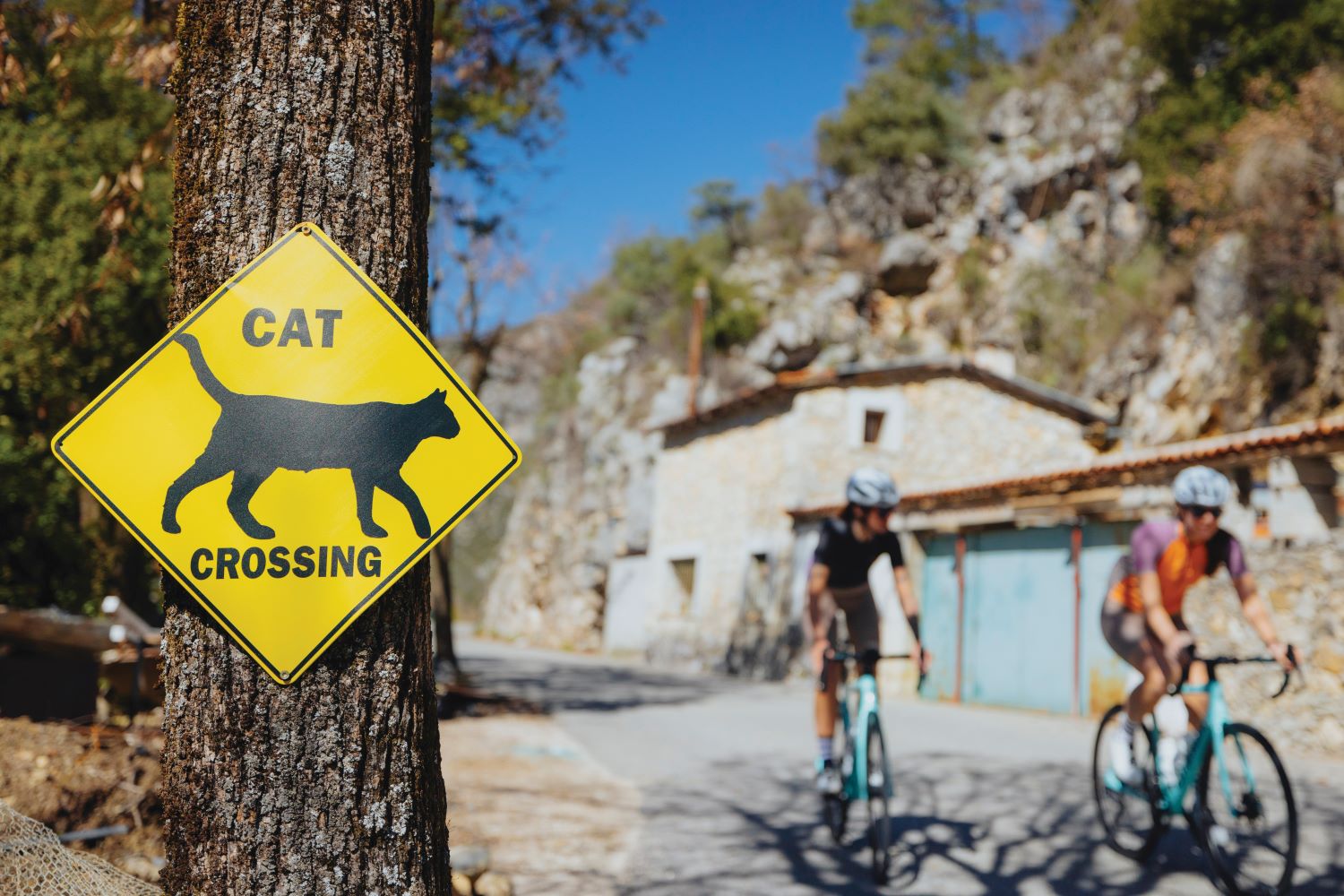
The climb goes on for 8km and I’m beginning to wonder whether Lucie is punishing me for some unspecified crime as I’m sure she could have picked an easier route back to the city.
But it turns out she has a treat for me.
When we finally arrive at Bellet, we swing right down a quiet country road that leads to a vineyard called Domaine de la Source.
Now on its third family generation, Domaine de la Source is one of the smallest organic vineyards in France, where they grow the folle noire, a rare French grape variety. It’s a relief to get off the bike, made all the better by being able to soak up the last of the sun with a glass of wine in hand.
We try a rosé, a red and a white, and all taste like nectar to this tired cyclist. After scoffing the remains of the olive tapenade, we somewhat reluctantly remount our bikes to tackle the final 10km back to Nice along a quiet back road.

Thankfully it’s all downhill. Back in the city, we ride along the Promenade des Anglais.
In the evening light I look at the people strolling on the seafront or having picnics on the beach.
Some are even swimming in the sea.
I have to remind myself that it’s only March. If this is what a winter in Nice looks like, then I think I might have to become a winterer too.
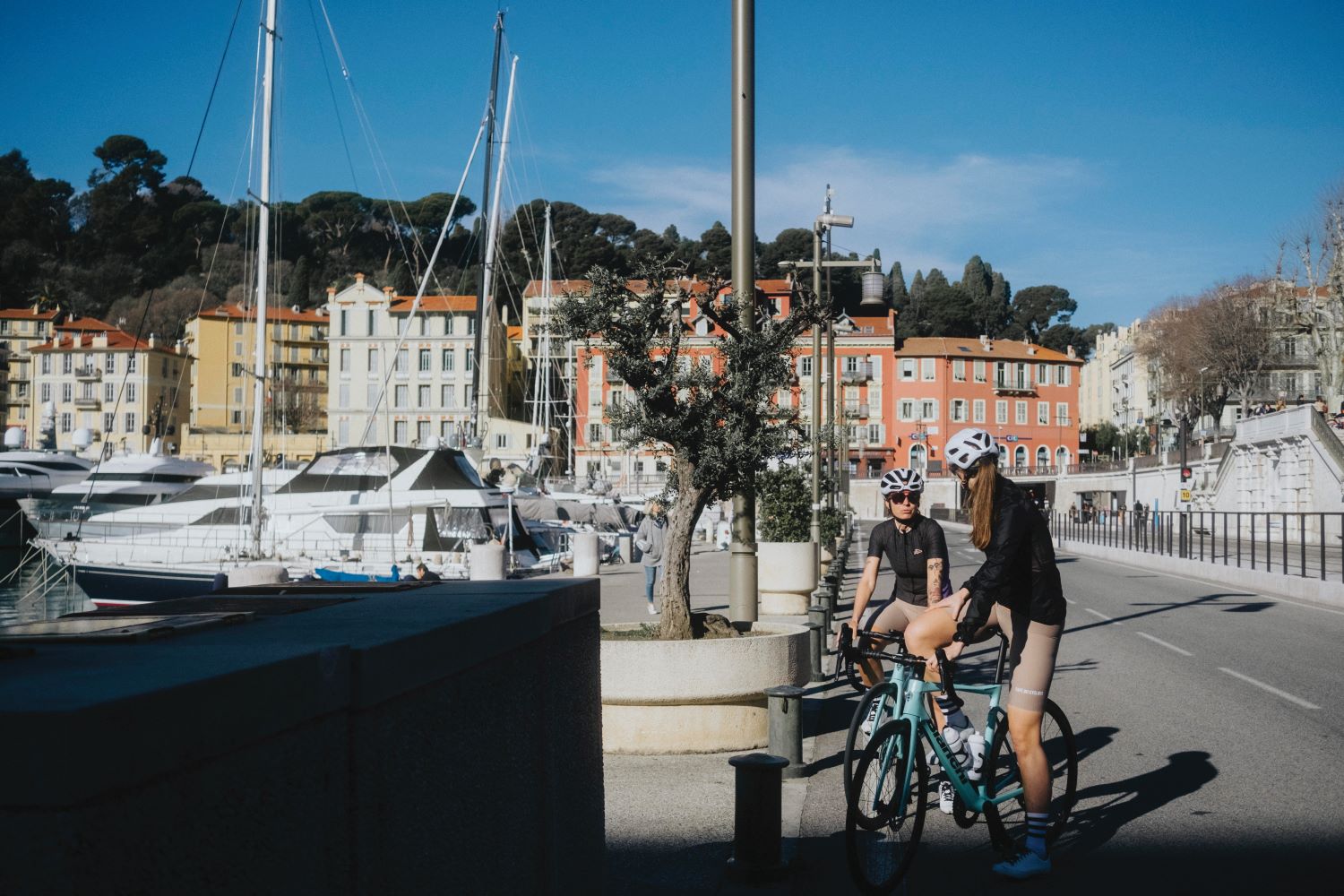
Ride à la Niçoise
Follow Cyclist’s route from the city of Nice

To download this route click here!
We started from the port at the Café du Cycliste shop. The route then hugs the coast before jutting out towards the mountains and onto the M19, which becomes magnificent after passing through the village of Levens.
Follow the road until Saint-Jean la Rivière, then take the M32 to Utelle and make a left to join the M132 and head up to La Madone d’Utelle.
Drop back down to Saint-Jean la Rivière and follow the road for 10km. Once you reach Saint-Martin-du-Var stick to the left and take the next left after a few kilometres to Castagniers and head towards Bellet.
After the Domaine de la Source vineyard take the route back to Bellet and roll down to the seaside, then follow the Promenade des Anglais all the way back to the port.
By the numbers
Well, that’s Nice
›122 Distance of ride in kilometres
›868 Metres of elevation of climb to La Madone d’Utelle
›2 Pro riders spotted and waved to
›4 Patou dogs spotted and petted
›5 Super-yachts spotted and grudgingly admired
›15 Pieces of socca eaten
›2021 Year Nice became UNESCO World Heritage Site
The rider’s ride
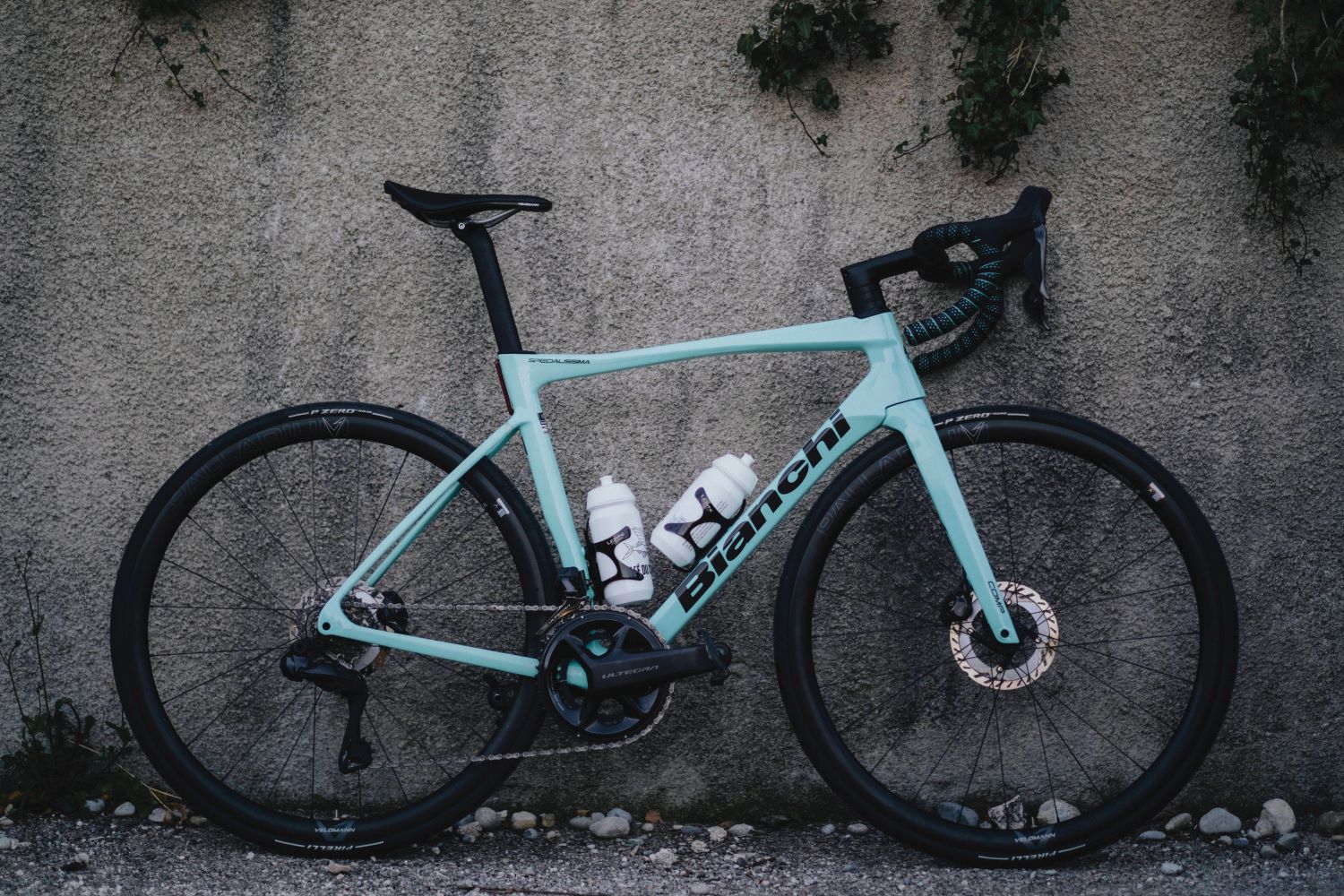
Bianchi Specialissima Comp Ultegra Di2, bianchi.com
The Specialissima is Bianchi’s climbing bike, and with over 2,500m of climbing on our route I was thankful for its 7.3kg (claimed) weight.
Not that lightness was its only quality. The Specialissima was a classy all-rounder, blending nimbleness on the climbs with surefootedness on the descents, and enough comfort to see me arrive at the end of a long day unbruised and remarkably fresh.
Shifting was impeccable thanks to the Shimano Ultegra Di2 groupset with 11-30t cassette, and the Velomann Palladium carbon wheels (Velomann being a sub-brand of Bianchi) felt fast-rolling.
They were helped by Pirelli P Zero Road tyres, which I’m a huge fan of – to my mind one of the best all-round performance tyres on the market.
I really wish I could have taken this bike home with me, but for anyone considering repeating this Big Ride, you can hire one from Café du Cycliste in Nice for €85 a day.
Eat and be merry

A visit to Nice is as much about the food as it is the riding
With this year’s Tour de France finishing in Nice, it is important to know the culinary delights offered by this city and what to get for your picnic on the beach.
A personal favourite is socca, a chickpea pancake, which is a delicious calorific snack and perfect if you’re feeling peckish post-ride. It’s made from chickpea flour, yeast and water.
Pan bagnat is another local speciality that in the local dialect means wet bread.
It is essentially all the ingredients of the Niçoise salad (tuna, egg, raw vegetables, olive oil) in a sandwich and each family has their own way of doing it.
There is also pissaladière, an onion tart topped with black olives and anchovies and baked on pizza-style dough.
The name comes from pissalat, a Provençal condiment of puréed anchovies, cloves, thyme and bay leaves that used to be spread on the dough before baking.
Nowadays, people usually just put the anchovies on top (or take them off, as I did).
The pièce de la resistance is the tourte aux blettes, which is made with Swiss chard.
The green vegetable has a natural sweetness to it and makes for a light and delicious tart that can be eaten as a dessert. It might sound odd to have a vegetable in a pudding, but don’t knock it before you’ve tried it.
How we did it
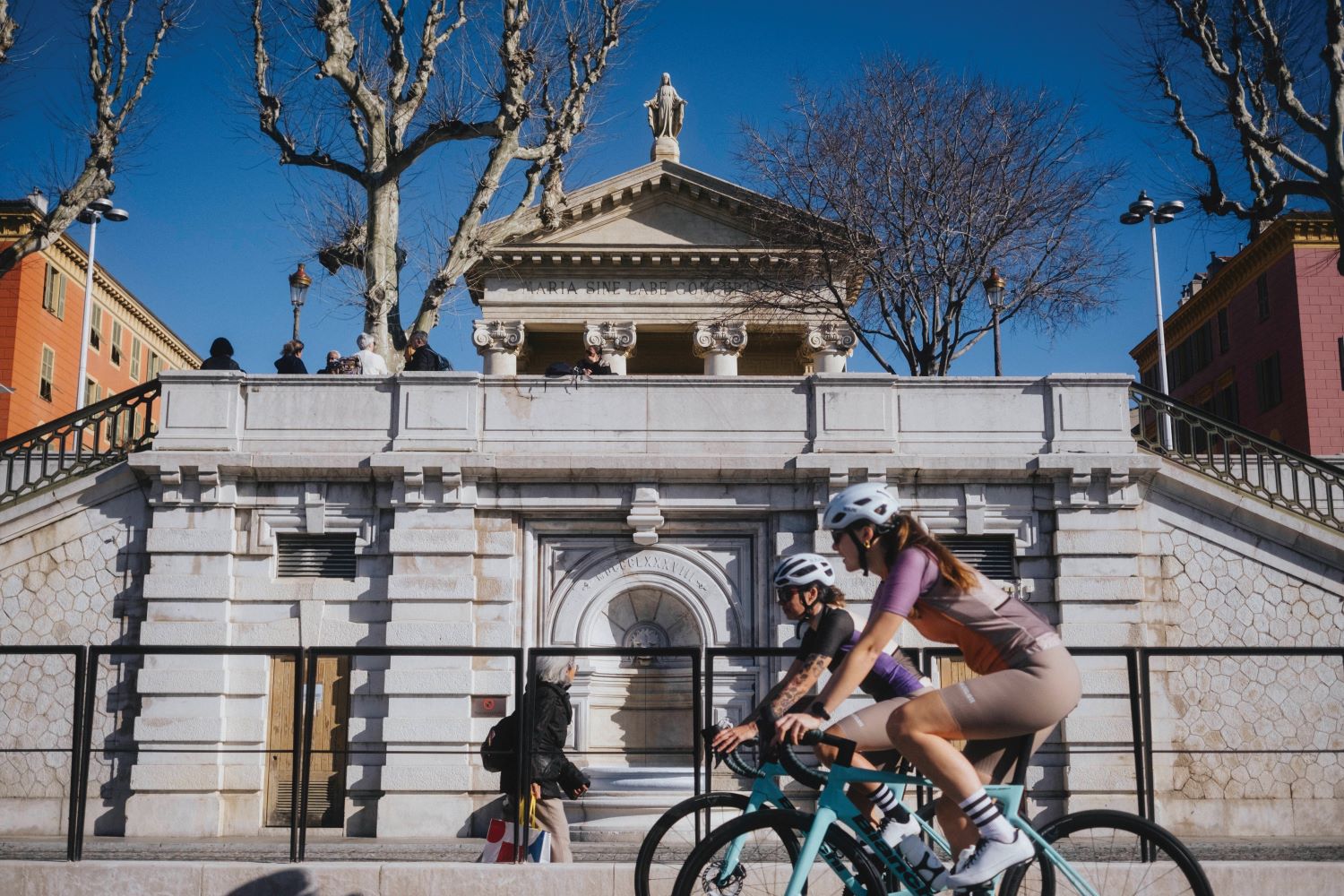
Travel
There are direct flights to Nice from most major international hubs that Australians would fly to – think Dubai, Doha, London, and of course Paris. You could also get the Eurostar from London to Paris and the TGV from Paris to Nice, the latter of which takes about six hours. The city is a 30-minute tram ride away from the airport or a 1.5 hour walk along the coastline.
Accommodation
We stayed at Hotel Aston La Scala (hotel-aston.com), a four-star bike-friendly hotel located in the centre of Nice, minutes from the beach and the old town.
Thanks
Thanks to Café du Cycliste (cafeducycliste.com) for its help with arranging our trip, for the bike rental and to Lucie Denis for riding with us and showing us her favourite places around the city. Many thanks to Caterina from the Nice tourism board (nice-tourism.com) for being an excellent guide, and also to Carine from Domaine de la Source.
The vineyard offers wine tastings without bookings, Monday to Saturday all year round, so you can turn up on your bike whenever (domainedelasource.eu). We can also recommend Type 55 (instagram.com/type.55.nice) near the seafront in Nice for charcoal pizza as a post-ride indulgence.
